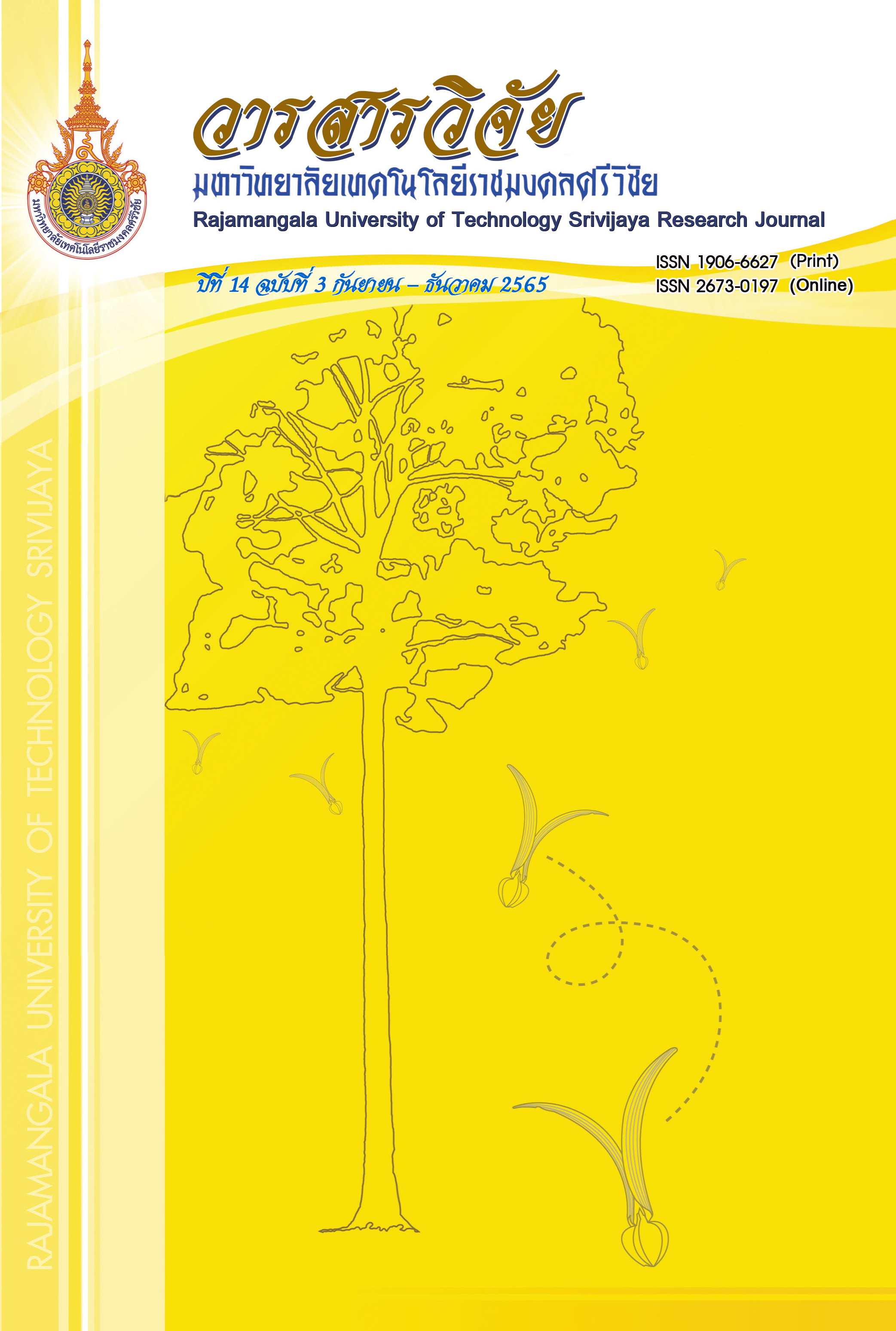A Portable Device for Non-destructively Assessing Apple Sweetness
Keywords:
apple, sweetness, near-infrared, non-destructive measurement, portable deviceAbstract
At present, an apple purchased from market is not guaranteed for sweetness. A standard method for determining the sweetness uses a device that measures the sweetness from apple juice. This research applied the principle of the near-infrared absorbance for non-destructive evaluation of apple to develop a portable device for determining the sweetness of an apple which operated with a smartphone. The device measured the absorbance in a reflectance mode at a wavelength range from 900 to 1700 mm. The device consisted of a spectrophotometer housed in a plastic box with width of 40 mm, length of 70 mm and height of 60 mm, and an application operated on the smartphone. A prediction equation for the soluble solids content (sweetness) was derived from the relationship between the near-infrared absorbance and the reference soluble solids content determined using a refractometer. The device operated by connecting the spectrophotometer via Bluetooth, controlling the spectrophotometer to scan for the near-infrared absorbance of the apple, calculating the soluble solids content, and displaying the sweetness result. The prediction equation for the soluble solids content was used to write the code for the sweetness calculation part of the application.
In testing the device for determining the sweetness of 50 apple, which were not used in the development of the prediction equation, the results showed that the device provided good accuracy for the sweetness prediction, yielding the correlation coefficient of 0.916 and the root mean square error of prediction (RMSEP) of 0.808 °Brix. The sweetness portable device developed in this research displayed the potential of the near-infrared spectroscopy technique for prediction of the sweetness with a determining speed of about 5 seconds without destroying the fruit.
References
Buyukcan, M.B. and Kavdir, I. 2017. Prediction of some internal quality parameters of apricot using FT-NIR spectroscopy. Journal of Food Measurement and Characterization 11(2): 651-659.
Cho, R.K., Sohn, M.R. and Kwon, Y.K. 1998. New observation of nondestructive evaluation for sweetness in apple fruit using near infrared spectroscopy. Journal of Near Infrared Spectroscopy 6(A): A75-A78.
Davies, A.M.C. and Fearn, T. 2006. Back to basics: calibration statistics. Spectroscopy Europe 18(2): 31-32.
Dos Santos, C.A.T., Lopo, M., Páscoa, R.N. and Lopes, J.A. 2013. A review on the applications of portable near-infrared spectrometers in the agro-food industry. Applied spectroscopy 67(11): 1215-1233.
Guo, Z., Wang, M., Agyekum, A.A., Wu, J., Chen, Q., Zuo, M., El-Seedi, H.R., Tao, F., Shi, J., Ouyang, Q. and Zou, X. 2020. Quantitative detection of apple watercore and soluble solids content by near infrared transmittance spectroscopy. Journal of Food Engineering 279: 109955.
Huang, J., Romero-Torres, S. and Moshgbar, M. 2010. Practical Considerations in Data Pre-treatment for NIR and Raman Spectroscopy. American Pharmaceutical Review 13: 116.
Jha, S.N. and Garg, R. 2010. Non-destructive prediction of quality of intact apple using near infrared spectroscopy. Journal of Food Science and Technology 47(2): 207-213.
Liu, R., Qi, S., Lu, J. and Han, D. 2015. Measurement of soluble solids content of three fruit species using universal near infrared spectroscopy models. Journal of Near Infrared Spectroscopy 23(5): 301-309.
Lu, R. and Ariana, D. 2002. A near-infrared sensing technique for measuring internal quality of apple fruit. Applied Engineering in Agriculture 18(5): 585.
Osborne, B.G. and Fearn T. 1986. Near Infrared Spectroscopy in Food Analysis. Longman Science & Technical, London.
Sharabiani, V.R., Sabzi, S., Pourdarbani, R., Solis-Carmona, E., Hernández-Hernández, M. and Hernández-Hernández, J.L. 2020. Non-Destructive Prediction of Titratable Acidity and Taste Index Properties of Gala Apple Using Combination of Different Hybrids ANN and PLSR-Model Based Spectral Data. Plants 9(12): 1718.
Trimble, S. 2019. Brix as a metric of fruit maturity. Felix Instruments: Applied Food Science. Available Source: https://felixinstruments.c
om/blog/brix-as-a-metric-of-fruit-maturity/, May 26, 2021.
Ventura, M., de Jager, A., de Putter, H. and Roelofs, F.P. 1998. Non-destructive determination of soluble solids in apple fruit by near infrared spectroscopy (NIRS). Postharvest Biology and Technology 14(1): 21-27.
Williams, P. and Norris, K. 2001. Near Infrared Technology in Agricultural and Food Industries. 2nd ed. American Association of Cereal Chemists, Inc. St. Paul, Minnesota, USA.
Workman Jr.J. and Weyer, L. 2012. Practical guide and spectral atlas for interpretive near-infrared spectroscopy. CRC press, Boca Raton.
Downloads
Published
How to Cite
Issue
Section
License
Copyright (c) 2022 Rajamangala University of Technology Srivijaya Research Journal

This work is licensed under a Creative Commons Attribution-NonCommercial-NoDerivatives 4.0 International License.
The content and information in the article published in Journal of Rajamangala University of Technology Srivijaya It is the opinion and responsibility of the author of the article. The editorial journals do not need to agree. Or share any responsibility.







